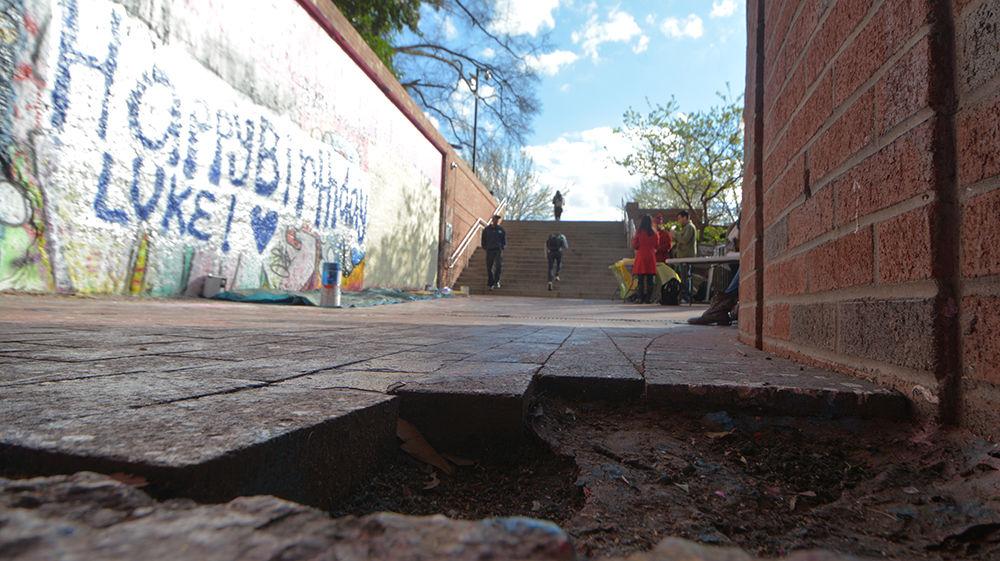NC State’s Grounds Management has replaced nearly 2,000 bricks around campus since December 2015. Grounds Management, along with other campus partners, have begun the “Missing Brick Campaign” to inform the campus community about the impact brick stealing creates.
According to the grounds division, most bricks that go missing come from the Brickyard, Wolf Plaza, other high-traffic corridors and housing areas, especially on Central Campus. The labor associated with replacing these bricks around campus costs the grounds division $19,824 annually.
According to Jeff Del Pinal, senior grounds manager, brick stealing poses major risks to the campus community.
“It’s a substantial issue,” Del Pinal said. “It’s a pretty significant impact to not only our department in terms of the work that we have to do as a result, but just to campus in general, the safety of campus.”
According to Terry Price, NC State’s grounds specialty masonry supervisor, among the issues that brick stealing poses are injury and costs associated with the university’s legal responsibility for such injuries.
“It’s a very large liability issue,” Price said. “People are getting hurt. We’re trying to come up with ideas to [avoid] that happening … The university is responsible for what happens on campus. They’re liable. If someone falls and gets hurt, they have to be responsible for them medically.”
Price added that he has been working for 20 years at NC State, and that brick stealing has “always been an issue.”
Del Pinal said that not only does brick stealing pose the risk for injury and potential lawsuits that might follow, but the activity is also illegal. He says one of the primary methods by which the grounds division is attempting to stop brick stealing is informing students about its illegality.
“Ultimately, it is theft,” Del Pinal said. “You’re taking state property.”
To combat the dangers posed by leaving holes in walkways, the grounds division has established brick giveaways around campus. Piles of brick are distributed around campus, accompanied by a poster board advertising the giveaway. The program started last year and is meant to encourage students to take bricks through legitimate, rather than illegal and “dangerous,” means.
“We see [brick stealing] as avoidable,” Price said.
According to Del Pinal and Price, most bricks are stolen in the weeks around graduation and move-in. The grounds division has responded by doing giveaways during these times, offering students bricks that the grounds division has kept in its surplus stockpile. According to Price, offering students these bricks is also a sustainable practice because, instead of ordering new ones to give away, it sources source the surplus bricks from previous projects.
“Students are obviously proud of their university, and they try to have something to take or have in memory of their time here,” Del Pinal said. “All we’re saying is that we can still offer that, just in a different way. [We want students] to be proud of the university and think of the impacts [brick stealing] is creating to their university.”
According to Del Pinal, every brick stolen from campus creates an “unnecessary” distraction for the grounds team, which is responsible for ensuring safe conditions around campus.
“Somebody doesn’t put a lot of thought into taking one brick, but multiply that by 100 people and you create a pretty significant situation,” Del Pinal said.
The team is composed of three people and does a daily patrol around campus to look for tripping or slipping hazards, including missing bricks. It also does a regular maintenance to address “root infiltration,” which is the displacement of bricks created by root growth.
Del Pinal said that he understands the importance that bricks have in the culture of NC State, but that he would like for students to take advantage of the other, legitimate means of taking a brick from campus.
“We know that this is a historical thing, and that there’s a lot of memorabilia involved in this, and it’s a tradition,” Del Pinal said. “We understand that, but they’re creating an impact on their own university.”








